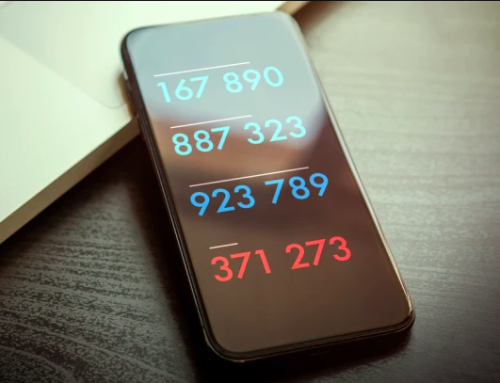Apple Home software bug could lock you out of your iPhone
A security research called Trevor Spiniolas has just published information about a bug he claims has existed in Apple’s iOS operating system since at least version 14.7.
The bug affects the Home app, Apple’s home automation software that lets you control home devices – webcams, doorbells, thermostats, light bulbs, and so on – that support Apple’s HomeKit ecosystem.
Spiniolas has dubbed the bug doorLock, giving it both a logo and a dedicated web page, claiming that although he disclosed it to Apple back in August 2021, the company’s attempts to patch it so far have been incomplete, and his specified deadline of 01 January 2022 for “going live” with details of the flaw has now passed:
I believe this bug is being handled inappropriately as it poses a serious risk to users and many months have passed without a comprehensive fix. The public should be aware of this vulnerability and how to prevent it from being exploited, rather than being kept in the dark.
You’ll have to make your own mind up about whether this bug truly “poses a serious risk”, but in this article we’ll tell you how to deal with the issue anyway.
The good news is that the bug doesn’t let attackers spy on your phone (or your HomeKit devices), steal data such as passwords or personal messages, install malware, rack up fraudulent online charges, or mess with your network.
Also, there are some easy ways to avoid getting bitten by this bug in the first place while you wait for Apple to come up with a complete fix.
The bad news is that if an attacker does trick you into triggering the bug, you could end up with a phone that’s so unresponsive that you have to do a firmware reset to get back into the device.
And, as you probably already knew – or, if you didn’t, you know now! – using Device Recovery or DFU (a direct firmware update, where you completely reinitialize the firmware of a recalcitrant iDevice over a USB cable) automatically wipes out all your personal data first.
Which devices are affected?
Spiniolas doesn’t say, but we’re assuming that this same bug is present in iPadOS, which has shipped separately from iOS since version 13, though always with a matching version number.
We also don’t know how far back this bug goes: as mentioned above, Spiniolas says “from iOS 14.7”, which we’re guessing is the earliest version he’s been able to test.
Apple doesn’t allow iPhones and iPads to be downgraded, as a way of preventing would-be jailbreakers from reverting to known-buggy iOS versions in order to reintroduce exploitable security holes on purpose.
What causes the bug?
According to the description given by Spiniolas, the bug is triggered if Apple’s Home app encounters a HomeKit device under its purview with an enormously long name, for example 90,000 characters or more.
That makes this bug sound like an old-fashioned buffer overflow, where more data is saved into memory than was originally allocated as the “worst-case” scenario, at best causing the offending program to crash, and at worst tricking it into misbehaving in a controllable fashion.
The former outcome – an outright crash – typically leads to a denial of service (DoS) bug, where attackers could deliberately crash an app, possibly over and over again, to cause inconvenience or outright trouble.
The latter outcome, where attackers maintain enough control over the crash to take over the buggy program completely and to replace the running program with untrusted software of their own choice, is known as remote code execution (RCE).
RCE is typically used to implant spyware or malware, and is clearly a much more serious danger than DoS.
At the moment, there’s no suggestion that Spiniolas’s crash could reliably be used for a full RCE exploit, or even that it could lead to an RCE at all.
But the fact that cybercriminals now know where to start looking makes this bug doubly worth avoiding.
How does the bug get triggered?
If you deliberately rename one of the home devices in your HomeKit network so it has a name of about 100,000 characters or more (Spiniolas variously used 500,000 and 90,000 characters in his experiments), the Home app will apparently lock up when it subsequently tries to deal with the weirdly-named device, and ultimately crash.
According to Spiniolas, Apple recently patched the Home app to prevent you renaming devices to have absurdly long names.
Bu the patch apparently doesn’t stop the latest version of the app from reacting badly to devices that already have overly-long names, and obviously doesn’t stop miscreants from using devices that haven’t been patched to catch out apps that have.
Trouble with Control Center
Unfortunately, says Spinioloas, if you’ve enabled the Home app in the Apple Control Center (the always-available menu system that you can bring up at any time by swiping from the top or bottom of the screen, depending on your iPhone version), then the app will automatically load in the background whenever you start your phone.
This means your device may get into a permanent “lockup-crash-try-again-lockup-crash-ad-infinitum” loop that leaves it unusably unresponsive before you have time to get into the Settings menu and remove Home from the Control Center.
Catch-22!
You can regain control of the Control Center by accessing the Settings app; but you first need to regain control of the Control Center in order to access the Settings app.
That’s why Spiniolas claims that the only way out of the dilemma is to do a Recover or a DFU on the unresponsive device.
Because this removes all your personal data, the Home app will no longer have any HomeKit device names to display until after you sign into your iCloud account for the first time and your HomeKit details get re-downloaded to your phone.
This gives you a chance, before your phone gets presented with any crash-inducing HomeKit device names, to access the Settings app and to remove the Home app from the Control Center screen.
As for renaming any offending devices so you can take control of them safely once more, Spiniolas suggests that you will need to install a custom app (he offers sample code you can use “at your own risk” on his GitHub page) using an Apple Developer account, and use that app to do the renaming.
What to do?
We consider it vanishingly unlikely that you will ever trigger this bug inadvertently on your own HomeKit network, given that you’re unlikely to copy-and-paste an absurd device name into the Home app by mistake and then also deliberately tap [Save] to commit the weird name to your HomeKit configuration.
So the most likely way you’d come unstuck is either:
- Someone you’ve already authorised to access your HomeKit network decides to trigger the bug for you. If you’ve chosen your trusted neighbours or family members wisely (and you trust them to keep their phones secure against cybercriminals and pickpockets), this risk should be very low.
- You accept a HomeKit network invitation from someone whose own network will trigger the bug. Assuming that you treat access to someone else’s home automation network as a significant personal responsibility (which it is!), this risk should also be very low.
In other words, mitigating this issue is easy:
- Minimise the number of people who have access to your HomeKit network. We recommend this strongly anyway.
- Minimise the number of HomeKit networks to which you yourself accept inviations. We recommend this strongly anyway.
- Remove the Home app from the Apple Control Center. Go to Settings > Control Center > Customize Controls. If Home appears in the
INCLUDElist, tap the red minus sign next to it and then tap the red[Remove]button that appears on the right hand side. (See image below.) - Make a regular local backup of your iPhone data. You can do this onto a Mac or Windows computer using iTunes. On Linux, it’s even easier: you can use the
idevicebackup2utility to make a full backup whenever you like. You don’t need an Apple account to keep regular local copies of your photos, videos, messages, audio files and so forth. If you save the data onto an encrypted removable drive, you can store it both offline and offsite, and in an emergency you’ll have access to your iPhone data without needing a working Apple login or an Apple device.







